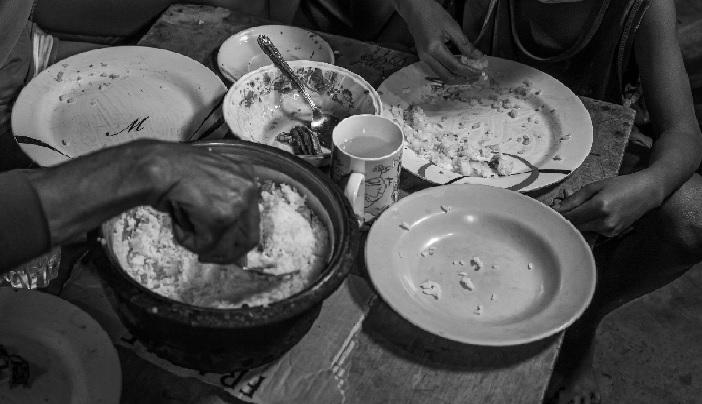PSA admits P64 per person/day food threshold ‘insufficient’

The Philippine Statistics Authority (PSA) on Thursday said the threshold it set for a person not to be considered “food poor” was insufficient to meet nutritional or dietary requirements in a day, saying that the current methodology in setting a food poverty ceiling is under review.
The National Economic and Development Authority (NEDA) earlier said, in a Senate hearing, that as of 2023, the monthly food threshold for a family of five is P9,581 or about P64 per person per day.
The P64 per person-a-day amount was arrived at when the P9,581 monthly food threshold was divided among its members and the approximate number of days in a month.
The threshold was higher than 2021’s P8,353 for a five-member family.
Food threshold refers to the minimum income required for a family or individual to meet the basic food needs, “which satisfies the nutritional requirements for economically necessary and socially desirable physical activities.“
This is also referred to as the subsistence threshold or the “food poverty line.”
At a press briefing in Quezon City, National Statistician Claire Dennis Mapa explained that the food threshold was based on sample food bundles (covering breakfast, lunch, dinner, and snack), which can provide basic nutritional needs, prepared by nutritionists.
LOOK: PSA’s food threshold (P64 per person/day) sample menu —breakfast, lunch, dinner, and snacks (meryenda). pic.twitter.com/V0hfyO2l7k
— Ted Cordero (@Ted_Cordero) August 15, 2024
Mapa said the higher food threshold in 2023 was due to the faster increase in retail food prices, “particularly, the high inflation seen in 2022 and 2023.”
Based on the per capita food threshold data from PSA, the sample food bundle could provide 100% energy, 123% protein , 119% calcium, 80% iron, 131% Vitamin A, 88% Thiamin, 80% Riboflavin, 249% niacin, and 106% Vitamin C.
“That’s how the bundle was arrived at… in other words, there’s science to it,” Mapa said.
The PSA chief added that the food threshold was based on the most basic needs and “least-cost approach,” meaning the meals were assumed to be prepared at home.
However, Mapa admitted that the threshold is “talagang sa tingin natin talaga insufficient ito (honestly, we really see it as insufficient).”
“I agree, this is really basic ‘yung P64 per day. Most probably a lot of people won’t be happy about it,” he added.
The National Nutrition Council earlier said that spending a little more than P64 on daily food intake—or approximately just above P21.30 for each meal—is not enough for a person to reach the recommended energy and nutrients for the body.
Economic think tank IBON Foundation has also criticized the food threshold, describing it as “really grossly underestimated” and called for a more realistic approach in computing the food poverty ceiling.
Review of methodology
The PSA chief said the agency is now reviewing the methodology in coming up with the food poverty threshold.
“There is a review process na ginagawa and as I said we have already initiated sa technical staff ng PSA ‘yung pag-review ng ating, una, 'yung ating methodology, 'yung sa menu,” Mapa said.
(There is a review process that we are doing and as I said we have already initiated, the technical staff of PSA, to review, first, our methodology, the menu.)
He said that updating the methodology is needed to reflect the changes in a family’s expenditures, income, and inflation.
“We also want it to be reflective of current situation so that's why we are constantly addressing and reviewing our methodology,” the PSA chief said.
“I assure you the PSA is reviewing it and we will have already initiated a review which is a part of our regular review process,” Mapa added.
The PSA estimates the monthly food threshold by computing the average monthly prices of food items in a sample food bundle (for a family of five) in a year then multiplying it by 12, which is the number of months in a year.
The agency’s sample food bundle, composed of three meals, includes:
- Egg, coffee with milk, and boiled rice or corn mix for breakfast
- Boiled monggo (mung beans) with malunggay (moringa) and dried dilis (anchovy), banana, and boiled rice or corn mix for lunch
- Fried fish or boiled pork, vegetable dish, and boiled rice or corn mix for dinner
- Pandesal for snacks (meryenda)
According to the PSA, the national food bundle took into account that the items included satisfy the 100% recommended energy and nutrient intake for energy and protein and 80% for other nutrients.
The food items in the bundle were also locally available, low-cost, and can be cooked or eaten in an area.—AOL/RF, GMA Integrated News




